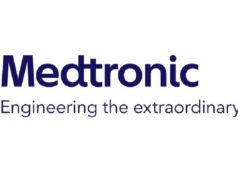 In an official statement, the Society of Neurolnterventional Surgery (SNIS) has acknowledged middle meningeal artery (MMA) embolisation as a beneficial adjunctive treatment for chronic subdural haematoma (SDH). This follows the presentation of new research at the recent International Stroke Conference (ISC; 7–9 February, Phoenix, USA) indicating that minimally invasive MMA embolisation procedures significantly reduce failure rates associated with traditional surgical and non-surgical management strategies without leading to an increased rate of serious neurological complications.
In an official statement, the Society of Neurolnterventional Surgery (SNIS) has acknowledged middle meningeal artery (MMA) embolisation as a beneficial adjunctive treatment for chronic subdural haematoma (SDH). This follows the presentation of new research at the recent International Stroke Conference (ISC; 7–9 February, Phoenix, USA) indicating that minimally invasive MMA embolisation procedures significantly reduce failure rates associated with traditional surgical and non-surgical management strategies without leading to an increased rate of serious neurological complications.
“The presented data indicate that this novel, adjunctive procedure represents an important advance, as it reduces the failure rates of standard management strategies with a high margin of procedural safety,” said David Fiorella (Stony Brook Cerebrovascular Center, Stony Brook, USA), a leading investigator for one of three key trials presented at ISC 2024. “Chronic subdural haematoma is an exceedingly common problem, and these findings will be relevant to a large population of patients. We look forward to the final, published results of all three studies.”
As per three new, prospective randomised controlled trials (RCTs) presented at ISC earlier this month—EMBOLISE, MAGIC-MT and STEM—adjunctive MMA embolisation significantly reduces the failure rates seen with standard management strategies for chronic SDH. This technically straightforward and minimally invasive procedure involves navigating small catheters into the MMA and injecting liquid agents into these blood vessels, which solidify like a glue, blocking off the vessels and preventing chronic bleeding into the subdural space.
This treatment represents a “major shift” in the management of this disease, according to the recent SNIS statement. The effect sizes of adjunctive MMA embolisation in patients in the non-surgical arms of MAGIC-MT and STEM indicate that many patients “may be able to avoid open surgery completely”, as embolisation substantially reduced failure rates when used adjunctively alongside non-surgical management in these trials.
In addition, for patients who required surgical drainage, EMBOLISE found that adjunctive MMA embolisation significantly reduced reoperation rates. The surgical management arm of the STEM trial showed a similar and “robust” trend, with embolisation cutting surgical failure rates by about half; however, STEM did not show differences in its non-surgical and surgical subgroups separately—and, as such, the surgical arm findings were not deemed significant as a standalone subgroup.
“In many ways, these data are really just the beginning,” Fiorella added. “There will be a tremendous amount of additional insight coming very soon. The MEMBRANE trial from Cerenovus just recently completed enrolment, and a combined analysis of all four of these randomised controlled trials of MMA embolisation is planned. It is important to acknowledge that EMBOLISE and STEM were performed under investigational device exemptions within the context of US FDA [Food and Drug Administration]-regulated, prospective clinical trials. No liquid embolic agent currently has US FDA clearance for MMA embolisation, and regulatory review is pending.”
According to the SNIS, chronic SDH is a disorder that primarily affects elderly patients, is associated with significant morbidity and mortality, and represents a “tremendous burden” on healthcare resources. And, as the US population continues to age, studies have shown that chronic SDHs may be “the most prevalent neurosurgical diagnosis that requires treatment” within the next decade.
The SNIS’ statement further notes that the existing standard of care for chronic SDH—which can be either surgical or non-surgical in nature—is associated with substantial rates of haematoma recurrence, and that these cases often necessitate reoperation. Surgical management has been linked to recurrence in 10–30% of patients, and failure rates in patients treated via non-surgical management are reported to be “even higher”.
It was against this backdrop that researchers began to explore the utility of adjunctive MMA embolisation back in 2018, with Fiorella and former SNIS president Adam Arthur (University of Tennessee Health Science Center, Memphis, USA) going on to lead the pivotal STEM trial evaluating the Squid (Balt) liquid embolic system in chronic SDH. The other two RCTs presented recently at ISC 2024, EMBOLISE and MAGIC-MT, assessed the Onyx (Medtronic) liquid embolic system.
“It is incredible to see the fruits of our labour after six years of research,” said Arthur. “Together, as neurointerventionists and neurosurgeons, we are making a difference by providing evidence-based, effective and patient-centric minimally invasive alternatives to traditional treatment strategies. My SNIS colleagues are continually producing remarkable work to advance the field and I am eager to witness what is to come.”









